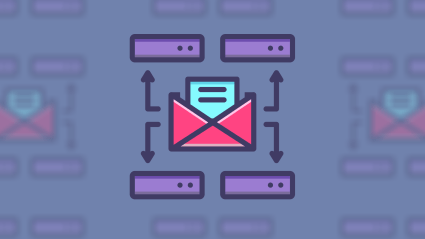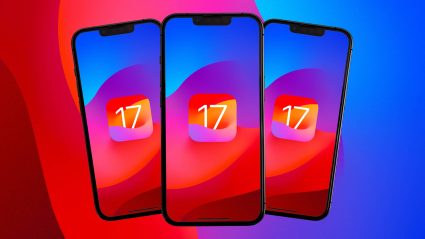The full release of iOS 15 still looms ahead (though as per usual we do not have a specific date at this point, but we expect it to drop in this month, maybe even this week). We wanted to share everything we’ve learned so far in the public beta, especially when it comes to email.
Many of the features we’ve heard about so far are likely to have an impact on your email marketing strategy, but please keep in mind that nothing is set in stone until it’s out in public (and, to be totally frank, until we’ve seen iOS 15.1, 15.2, etc.).
So far, we know we were right about how certain things like email opens and IP obfuscations would work; the outlier here is Hide My Email, which is not quite what we expected.
And now, without further ado, here’s everything we know (and don’t) from the iOS 15 beta and how it is likely to affect your email program—and what you should do to get ready.
iOS 15 Beta Observation #1: Over-Reporting Email Opens
There’s been plenty of conjecture about how iOS 15’s masking of email opens would affect reporting on email open rates and other metrics.
What we know now: What we’ve seen so far in the beta indicates that opens will likely be significantly over-reported. One silver lining here is that resending to people who have not opened might be much safer than we thought.
These new “false” open signals will likely result in undersending, not slamming someone’s inbox repeatedly.
What is likely to happen: As far as performance KPIs are concerned, we’re predicting that click rate will become the new open rate. Click rate is measuring an action further along the customer journey than an open, which has both pros and cons. Because they’re lower in the funnel, clicks align more directly with conversions in general, but they’re not as good at gauging upper-funnel engagement or interest. Think about how you interact with emails from brands you’re subscribed to: you might scroll through multiple promotional emails before pulling the trigger and clicking through to a product or web page.
What we still don’t know: It’s unclear how some of the ripple effects of masked open rates will impact some best practices (one example: which other tools will you use to evaluate deliverability?), and we don’t know yet how ESPs or inbox providers will respond to the changes. Some other functionality, like whether an Abandon Browse via email can still be captured, have yet to be confirmed.
How to prepare: Loosen current click, conversion, and on-site engagement segment definitions to better replicate invisible open interactions. And keep in mind that click-throughs will have new importance in your email design. Prioritize clicks in your onboarding and welcome series, as well as your re-engagement series.
iOS 15 Beta Observation #2: How IP Obfuscation Affects Email
Private Relay is Apple’s new IP obfuscation feature, and it’s been the subject of a great deal of scrutiny so far. It’s worth noting that both Private Relay and the new Hide My Email capabilities are part of iCloud+, which costs 99 cents a month.
Just how many people will sign up and pay for iCloud+ remains to be seen, but here’s what we’ve got on Private Relay so far.
What we know now: Private Relay allows users to block their IP address, which will diminish payload capacity and mitigate fingerprinting. But the new IP address generated by the software will still be localized by region. This will be important in two ways: in the mail app, where marketers use image-loading IP to determine location, and on the open web, where ITP will stop trackers from using an IP address to establish identity.
What is likely to happen: For email marketing, the feature will mainly impact location-based targeting. Practically, this may limit marketers’ ability to serve or feature location-based content to users with no established address and potentially the use of “local time zone” scheduling tools—but since we know the new IP addresses generated will be regional, they will probably allow for some continued level of location-based personalization.
What we still don’t know: Many marketers use dynamic tools for email campaigns that are dependent on location and/or open time. We don’t know yet how those will be affected (or how providers will adjust their offerings).
How to prepare: On email, while you still have access to current IP identifiers and open rate as a KPI, it won’t hurt to test send time before and after this change.
It’s worth noting that, beyond email, this is just the beginning, and you need to plan for in-browser identity going the way of the dinosaurs. Private Click Measurement (PCM) is going away. Don’t try to claw IP back by trying to fingerprint using other pieces of information.
The key here is not to waste your time and resources trying to find short-term workarounds.
Marketers need to get comfortable utilizing server-side tracking where possible (even though it will also be affected by the diminishment), Facebook’s advanced matching, and Google’s enhanced conversions (currently in beta).
iOS 15 Beta Observation #3: Hide My Email Is A Little More Complicated
Hide My Email is also a part of iCloud+, but it works a bit differently than our initial prognostications when it was announced.
What we know now: To use Hide My Email, users go into the mail app and generate a new email address that re-directs to your current inbox. In the beta, you’re limited to 100; at launch, it appears it will be unlimited. The biggest difference is that you can’t generate a new address ad hoc on a website, only from the mail app.
What is likely to happen: The assumption about how people will likely use Hide My Email seems to be that you can generate new emails for different purposes and note what you use them for, then use them in web browsers and other places you need an email to subscribe, sign up, make purchases, and more. We also know Apple is making it relatively simple to delete and purge everything under a specific generated email address.
What we still don’t know: The biggest question mark here is the human one. People tend to be lazy when it comes to switching back and forth between applications for what appears to be a fairly low return.
We don’t know how many people will really go all the way and use the feature. We’re not completely sure whether or not there will be limits on how many addresses can be generated, and it will likely erode the usefulness of the email address as an identifier, we just don’t know how much. In ad platforms, there might be a bigger problem. We don’t know if the new email addresses can be stitched together to use on Facebook or other platforms because it will be hashed, so using name and location will likely be much harder.
How to prepare: Don’t panic; instead, think about it as another tool to unsubscribe. People can already essentially do this with existing Gmail addresses. On the plus side, you’ll still have access to the inbox (the fake address funnels to the real one).
It is worth considering what other information you should ask for to use as an identifier, including phone numbers or physical addresses.
Start now by:
- Testing how you ask for more or different information from the email address alone
- Watching list health for people getting a one-off, first-time promotion, but remember that you can’t rely on an IP address to fish through the fakes
- Trying to tie existing customers to information like a credit card number or mailing address that can’t be faked
- Considering leveraging a single sign-on (SSO) state.
Don’t Wait: iOS 15 Is Launching Soon (And Your CRM Needs To Be Ready)
We’ll continue to keep you updated as more information about the launch date and what else might be changing comes out. You should start evaluating your email programs now, and continue testing adjustments to your engagement-based audiences and triggers so your house is in order both before iOS 15 launches fully and, for retailers and ecommerce brand in particular, well before Cyber Week.
The #1 item on your to-do list should be getting your CRM in order. Losing open rate as a measure of subscriber interest means the time has come to change how we’re tracking email success.
Strategize how to get more proactive about understanding and collecting information about prospects’ interest.
Ask for more identifiers upfront, using emails, quizzes, and surveys to learn more (and own that information!). You can model paid audiences off of that data; although they tend to be smaller, they work.
In the end, the answer is deceptively simple: marketers need to build real relationships with customers, earn the information they’re choosing to share, and craft better first-party data strategies from top to bottom.








Responses